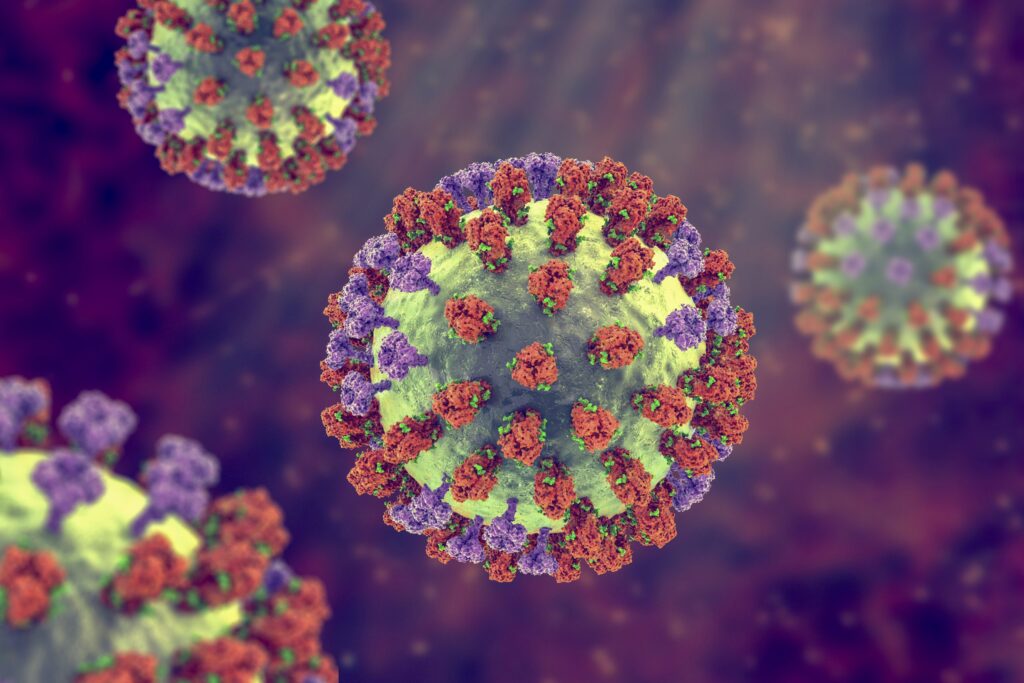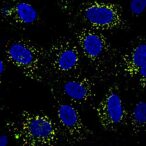An international research team studying mice and human tissue samples has uncovered why older people are more likely to suffer severely from the flu and suggest that their findings could be used to help address this risk.
The team discovered that in older people the glycosylated protein apolipoprotein D (ApoD)—which is involved in lipid metabolism and inflammation—is produced in senescent lung cells at much higher levels than in younger people. The team established that highly elevated ApoD production with age in the lung drives extensive tissue damage during infection to reduce the protective antiviral type I interferon response. This has the effect of reducing the ability to resist influenza A virus (IAV) infection, resulting in a more serious disease outcome.
The results point to ApoD as a potential therapeutic target for preventing severe influenza infection in older people. “Aging is a leading risk factor in influenza-related deaths. Furthermore, the global population is aging at an unprecedented rate in human history, posing major issues for healthcare and the economy,” said Professor Kin-Chow Chang, PhD, at the School of Veterinary Medicine and Science at the University of Nottingham. “So we need to find out why older patients often suffer more severely from influenza virus infection.”
Chang is co-author of the team’s published paper in PNAS, titled “ApoD mediates age-associated increase in vulnerability to influenza virus infection,” in which they stated, “ApoD can therefore be a target for therapeutic intervention to protect against severe influenza virus infection in elderly populations.”
The research was carried out as international collaboration led by scientists at the China Agricultural University, University of Nottingham, Institute of Microbiology (Chinese Academy of Sciences), National Institute for Viral Disease Control and Prevention (Chinese Centre for Disease Control and Prevention) and the University of Edinburgh.
Aging is a leading risk factor in influenza-related deaths, the authors wrote, and the global population is aging at “an unprecedented rate in human history,” which poses major issues for healthcare and the economy. “This demographic shift will have significant health implications, one of which will be the need to provide better protection and treatment for the elderly against respiratory viruses,” they stated. However, the team continued, the molecular mechanisms in the aging process responsible for severe infection remain unclear. “Consequently, there is a need to better understand the pathogenesis of severe respiratory viral infections in the elderly to be able to develop more effective prophylactic and therapeutic treatments.”
The researchers set out to investigate the mechanisms that might be responsible for this increased severity of influenza virus infection with age, using an aging-mouse model and appropriate donor human tissue sections. They identified ApoD as an age-related cell factor that impairs the activation of the immune system’s antiviral response to influenza virus infection by causing extensive breakdown of mitochondria (mitophagy) in senescent cells, resulting in greater production of virus and lung damage during infection. Mitochondria are essential for cellular production of energy and for induction of protective interferons.
“We identified apolipoprotein D (ApoD), a glycosylated protein involved in lipid metabolism and inflammation, as an age-related molecular determinant that impairs the activation of innate immune antiviral response by triggering extensive mitophagy in the aged lung during influenza virus infection,” they stated.
Interestingly, the investigators also found that an otherwise lethal dose of influenza virus in ApoD-deficient (ApoD-/-) mice resulted in improved survival, reduced viral load in the lung, and reduced pulmonary pathology. These improvements were associated with reduced mitophagy and elevated type I IFN production. “ApoD–/– aged mice showed reduced mitophagy and were protected from otherwise lethal IAV challenge; these mice exhibited reduced mortality, less body weight loss, reduced virus load in the lung, and reduced pulmonary damage, all of which were linked to restored type I IFN response,” the investigators stated.
The team in addition demonstrated that using the senolytic drug ABT-263 to remove senescent cells in aged mice lungs reduced ApoD levels, and alleviated pulmonary pathology in response to influenza virus infection. They suggest that ApoD could therefore represent a target for therapeutic intervention to protect against severe influenza virus infection in the elderly, and which could have a major impact on reducing morbidity and mortality in the aging population. “The successful oral use of a senolytic compound ABT-263 in aged mice in lowering ApoD level, and limiting virus propagation and associated pulmonary damage demonstrated the preventive and therapeutic potential of targeting ApoD in reducing severity of IAV infection in elderly patients.”
Noting limitations of their study, the team concluded, “… efforts should be made to translate these findings into clinical trials to assess the safety and effectiveness of senolytic compounds, mitophagy inhibitors, or ApoD-modulating drugs in elderly patients with viral pneumonia.”
Professor Chang added: “There is now an exciting opportunity to therapeutically ameliorate disease severity of the elderly from influenza virus infection by the inhibitory targeting of ApoD.”



